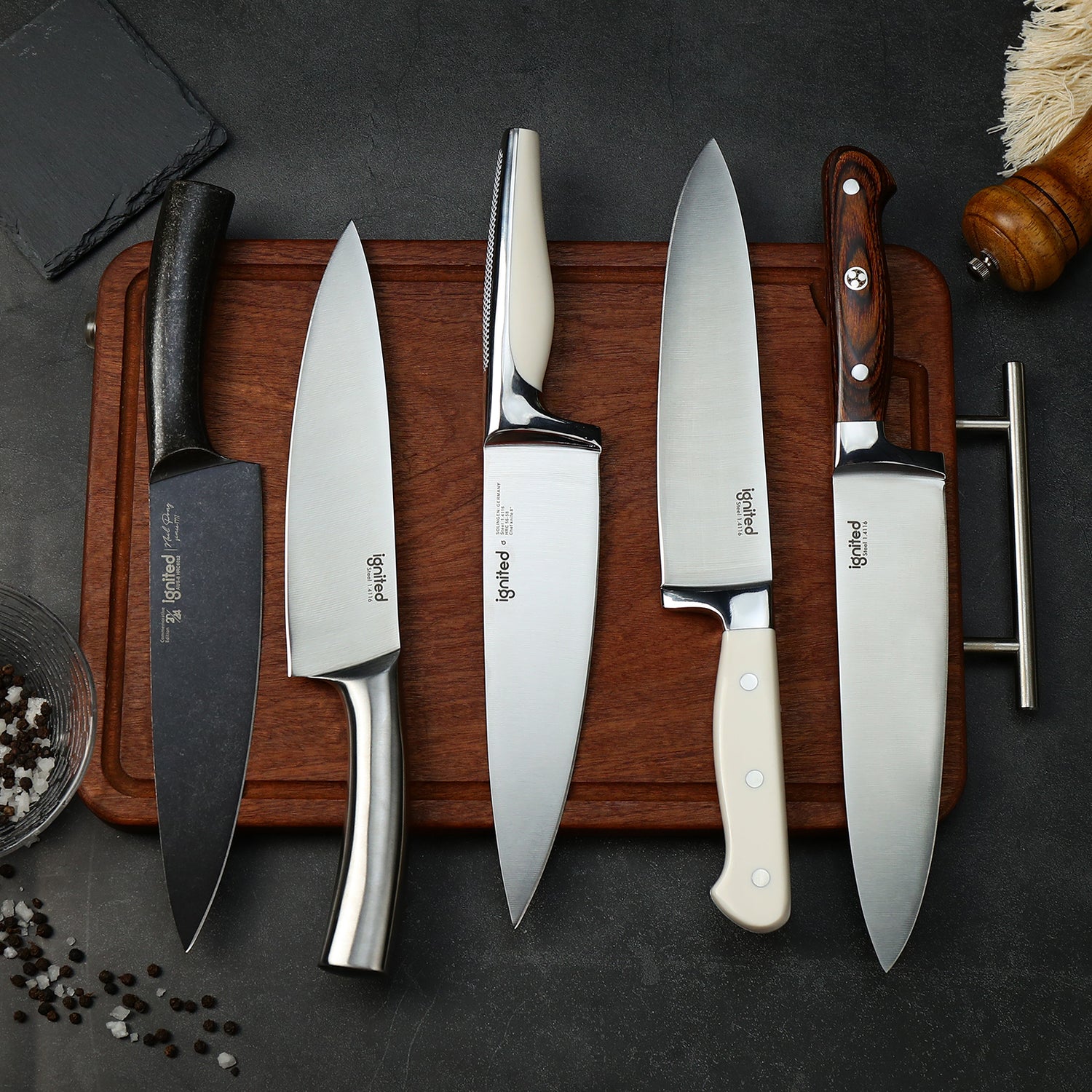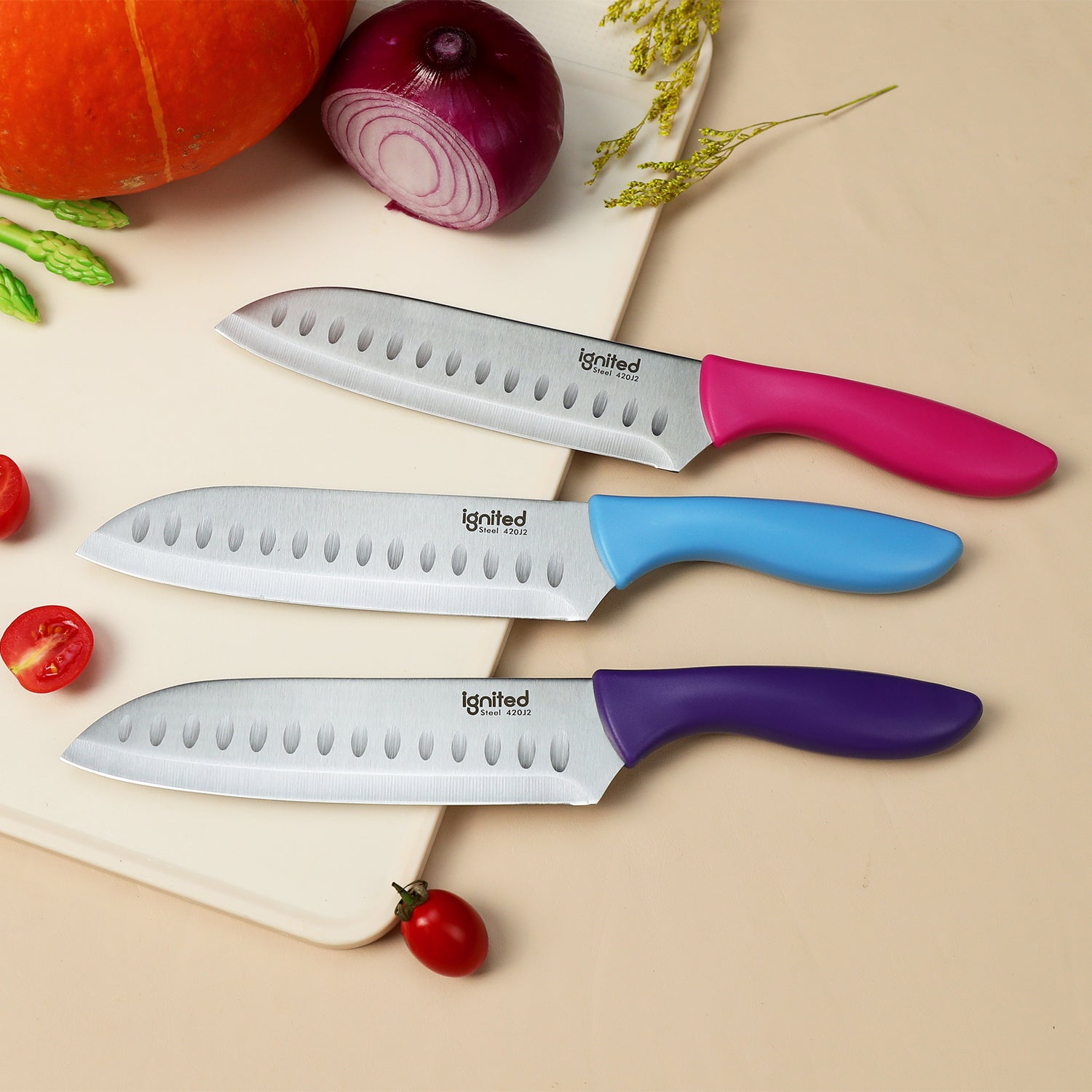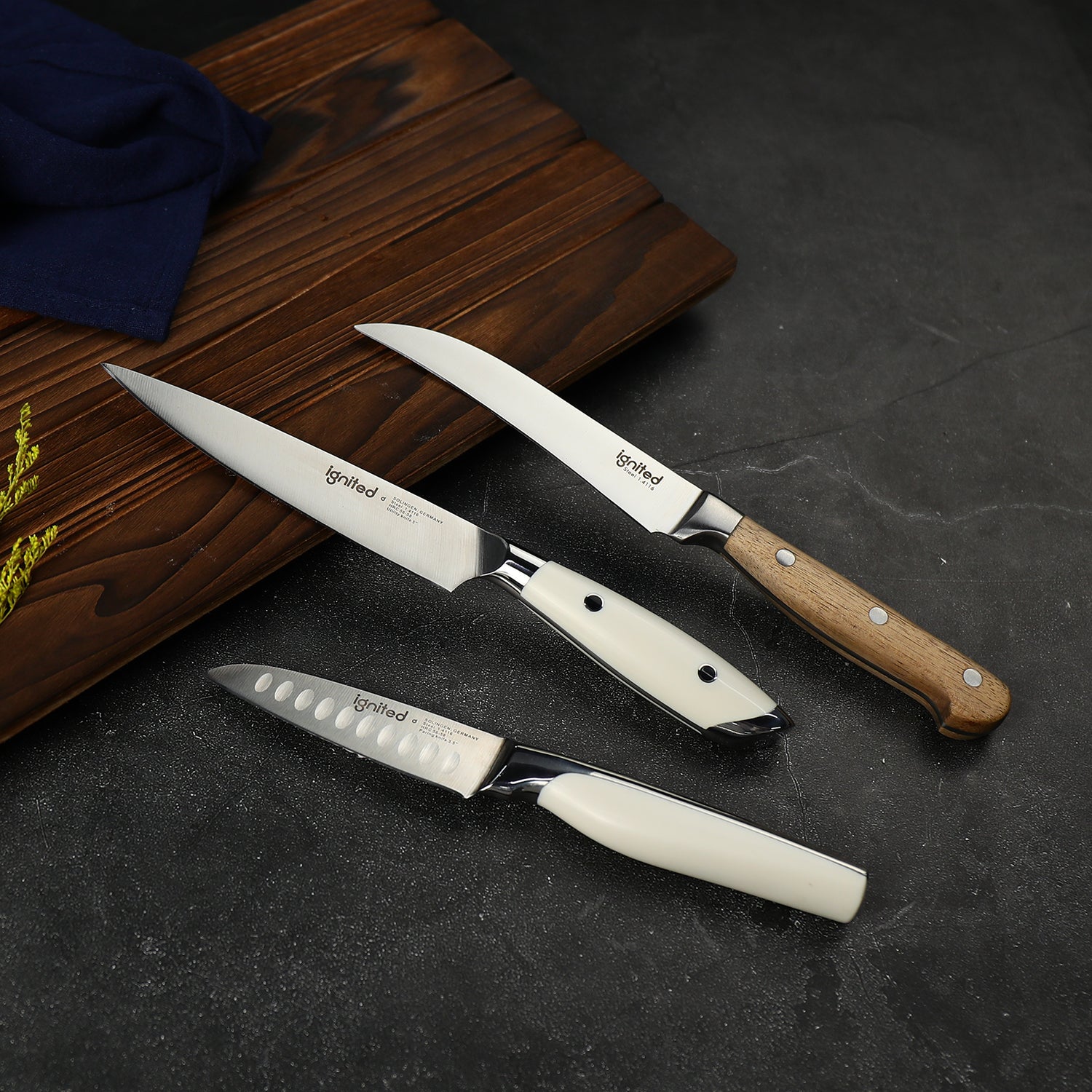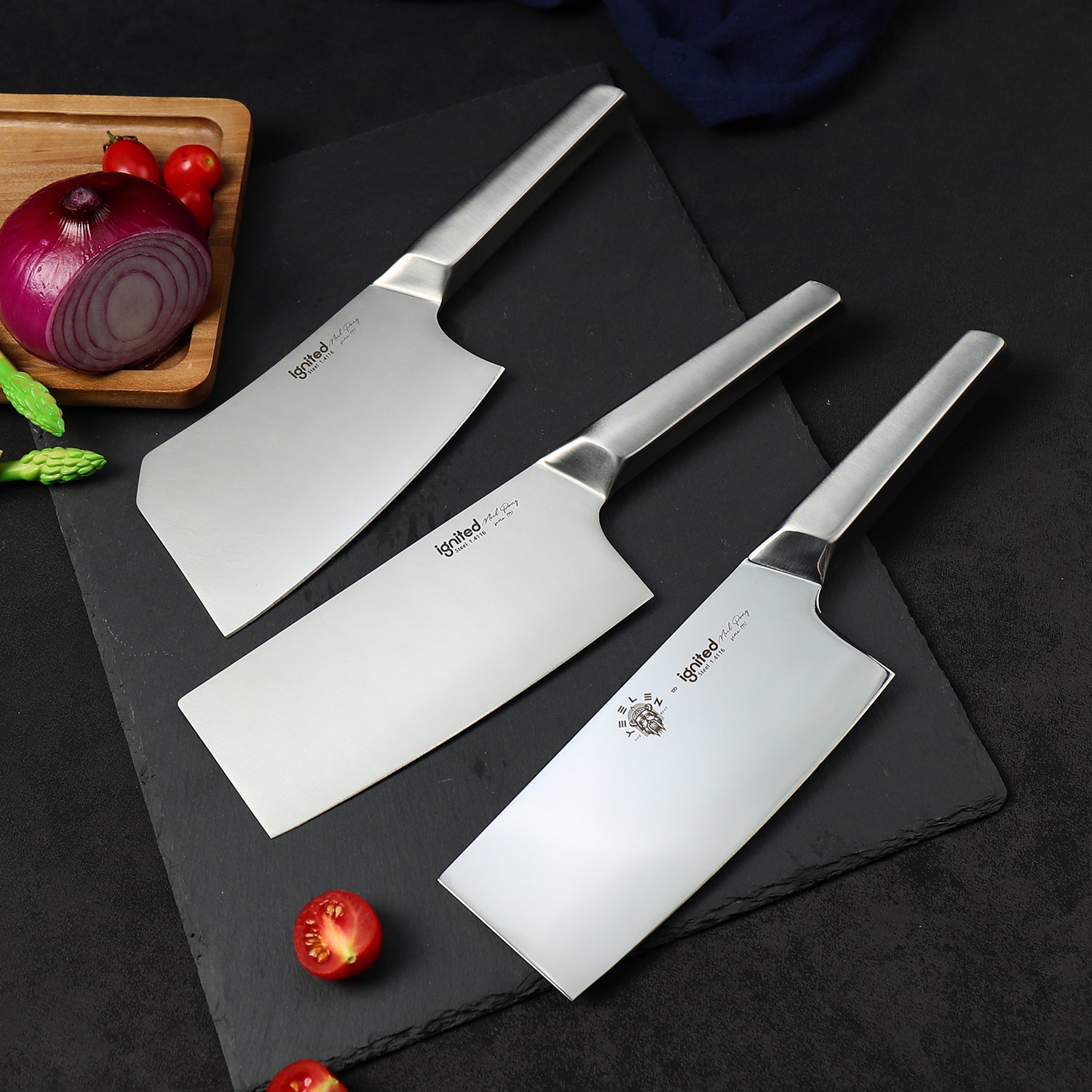When it comes to kitchen knives, the Santoku and chef knife are two of the most popular options. While the classic Western chef knife has long dominated culinary spaces, a growing number of home cooks are gravitating toward the Santoku. Why? Let’s explore the differences and discover why the Santoku knife is winning hearts in home kitchens.
1. Blade Shape and Size
The Santoku knife typically features a shorter, thinner blade (usually 5 to 7 inches), with a flat edge and a sheep’s foot tip that curves down sharply. In contrast, the chef knife is longer (usually 8 inches or more) with a curved edge designed for rocking motions.
This compact and straight-edged design of the Santoku allows for excellent control and precision, making it ideal for smaller hands and more detailed slicing tasks.
2. Cutting Motion and Technique
The Santoku knife excels with a straight-down chopping or slicing motion, which many home cooks find more intuitive than the rocking motion needed for a chef knife. If you're prepping vegetables, fruits, or boneless meats, the Santoku offers a clean, efficient cut with minimal effort.
3. Versatility in the Kitchen
True to its name—"Santoku" means "three virtues" in Japanese—the Santoku is designed for slicing, dicing, and mincing. While the chef knife is versatile too, the Santoku offers a more compact and agile alternative for those focused on everyday cooking.
It's especially effective for tasks like:
- Chopping onions, garlic, and herbs
- Slicing cucumbers, carrots, and bell peppers
- Cutting boneless chicken or fish fillets
4. Ease of Use for Beginners
The shorter blade, lighter weight, and intuitive motion of the Santoku knife make it especially friendly for beginners. Many people find it easier to handle, control, and maintain accuracy, which helps build confidence in the kitchen.
5. Compact and Space-Saving
For cooks working in small kitchens or with limited counter space, the Santoku’s compact size is an advantage. It's easier to store, easier to maneuver, and doesn’t feel overwhelming in smaller hands.
Conclusion
While both knives have their merits, the Santoku knife has emerged as a favorite among home cooks for its practicality, ease of use, and efficiency. If your kitchen tasks revolve around everyday meal prep—especially chopping vegetables and slicing proteins—the Santoku is likely the better fit.
Whether you're a seasoned cook or just starting out, the Santoku’s simplicity and functionality might just make it your new go-to knife.





